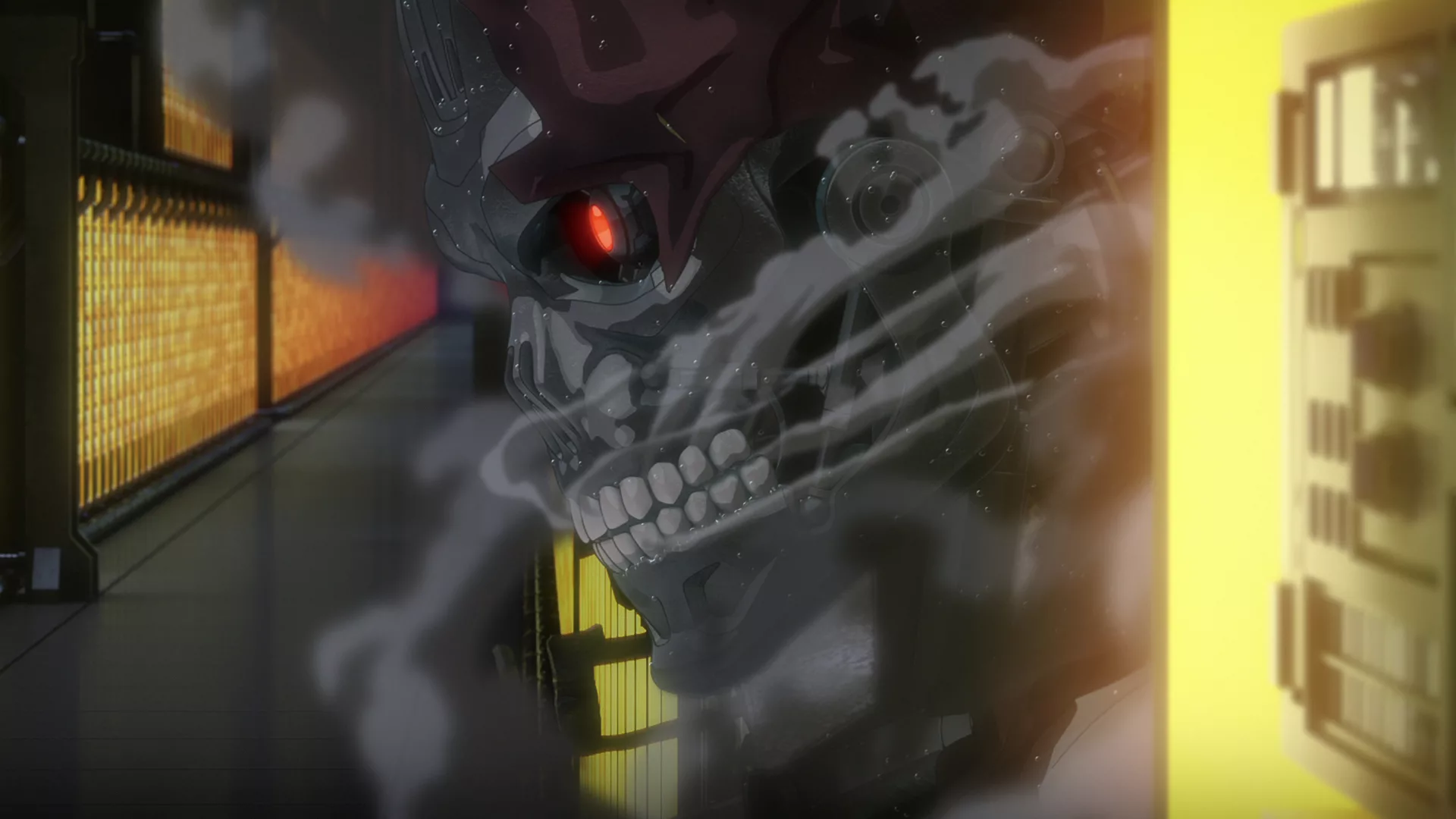
[ad_1]
Considering how many R-rated ’80s action franchises had their own Saturday morning cartoons, it only made sense for “The Terminator” to eventually receive its own stylized animated show. Netflix’s anime-inspired “Terminator Zero” is tonally aligned with its film counterparts, if not even more horrific and dour than the watered-down installments in the franchise. However, the freshly styled anime series takes a particularly long time to boot up an engaging new spin on the Terminator formula.
Skynet controls the world in an apocalyptic 2022, when an indestructible Terminator (Timothy Olyphant) on a killing spree tries to eradicate humanity itself. The Prophet (Ann Dowd), the leader of the resistance, tasks a skilled soldier named Eiko (voiced by Sonoya Mizuno of “Ex Machina” fame, funnily enough) to go back in time to 1997, the day before Skynet gains self-awareness and launches war on humanity. As every Terminator tale goes, the Terminator follows the soldier back to the past with a mission to kill the future.
Thankfully, opposed to being another long line of summer movies and shows submerging in fan service, “Zero” attempts to take the franchise in a new direction. In 1997, Malcolm Lee (André Holland, doing his best Jeffery Wright voice) is plagued by visions of the future, and dedicates his life to preventing Skynet and the inevitable day of judgement. He creates an AI named Kokoro (Rosario Dawson), and, like its Japanese meaning, it splits into three colored forms, representing mind, body, and spirit. But unlike Skynet’s mission to destroy humanity, seeing it as a threat to itself, Kokoro, which was built to save it, is deciding whether or not to be its savior.

While Malcolm buries himself into his work, his children—tech-wiz Kenta (Armani Jackson), headstrong Reika (Gideon Adlon), and kindhearted Hiro (Carter Rockwood)—are often at home. And they have one family rule that seems natural for a patriarch terrified of the future: No technology at home. Not even a robotic toy cat. The day before Skynet’s launch coincides with their mother’s death anniversary. When Malcolm prioritizes work even then, the children, feeling abandoned, run away. Their paths intersect with those of Eiko and the Terminator, leading to a frenzied battle against time for the sake of survival.
Production I.G, best known for “Ghost in the Shell” and “Haikyuu! The Dumpster Battle,” is the perfect fit for bringing James Cameron’s killer endoskeletons to anime. The series exhibits a striking visual style, which effectively translates Stan Winston and Cameron’s eerie cybernetic designs into a cinematic 2D landscape. Moreover, it displays exceptional background art that mesmerizingly depicts the ghastly horrors of the robopocalypse future and 1990s Japan.
The action direction of Masashi Kudō (“Bleach”), which is equally exhilarating as it is frightening, is what truly makes “Zero” stand out. The first two episodes of the eight-episode season showcase his animation team’s skill in crafting large-scale, brutal action of cinematic quality, delivering the same euphoric rush of adrenaline as “Terminator 2: Judgment Day,” with eye-catching 2D visuals. At every time the Terminator steamrolls any human beings, it doesn’t shy away from illustrating the graphic bloody violence, enough to make your stomach churn, more effectively than any of the live-action movies. Even in its anime form, the Terminator remains a terrifying beast.

Despite its new source of craftsmanship, the engraved American signature all over “Zero”‘s frenzied storytelling prevents it from being as attention-grabbing as its visuals. Mattson Tomlin (“Project Power”) serves as showrunner and sole writer, and the scripts clash with the visuals by hitting too many formulaic beats in a by-the-numbers family thriller. Despite no Sarah or John Connor, Tomlin is content with a narrative that plays like a standard Terminator flick, failing to provide an inventive twist on a predictable formula until its second half.
The two plots (Eiko & the kids and Malcolm & Kokoro) fight for air as neither display enough screenwriting ambition until one revelation regarding a character changes the trajectory of the show overall. But, for the most part, it feels like a very American way of storytelling, down to a forced use of foul language that doesn’t match the Japanese-based style of presentation. For the most part, it comes across as an American production cosplaying in an anime medium that may look right but doesn’t sound it.
The series takes big swings with a well-earned payoff towards its final few episodes, but it’s bogged down once again by being another underdeveloped eight-episode series that should’ve given at least two more episodes to flesh out its characters. It only makes me wonder what “Terminator Zero” would have been like if a Japanese writer had taken the pen. Is it too late to go back in time and find out?
Whole season screened for review.
[ad_2]